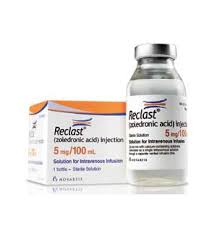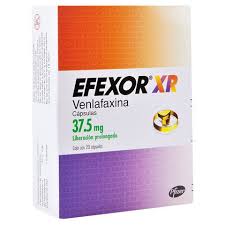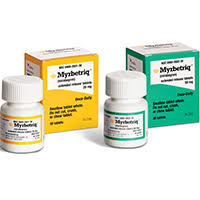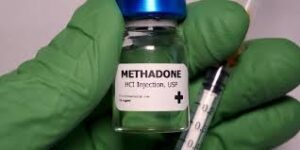Reclast

Reclast (Zoledronic Acid) — Everything You Need to Know
Reclast is a bisphosphonate that treats and prevents bone loss conditions such as osteoporosis and Paget’s disease. Its active ingredient, zoledronic acid, prevents the cells that pauperize bone tissue from working too fast and losing density. It is administered intravenously (IV), typically once a year or less frequently depending on the disease being treated.
Uses of Reclast
Supervised exercise program for osteoporosis treatment and prevention:
Postmenopausal women for the prevention of spine and hip fractures.
Men with osteoporosis to increase bone density and reduce the risk of fractures.
Patients requiring prolonged treatment with corticosteroids (eg, prednisone), which can cause bone loss.
Paget’s Disease of Bone:
Offers a treatment for a condition in which bone remodelling happens too quickly, resulting in fragile, misshapen bones.
Bone Loss Prevention:
For people at high risk of fractures — like those with a history of broken bones or people receiving treatments that could weaken bones.
Prevention of Fracture Following a Hip Fracture:
Decreases the chance of fractures occurring in patients who have already had a hip fracture.
Osteopenia — Treatment (off-label):
How is it usedSome of the bisphosphonates are sometimes used for patients with osteopenia (low bone density) to prevent the condition from advancing to osteoporosis.
How Reclast Works
Reclast is part of a drug class called bisphosphonates that function by:
Blocking the activity of osteoclasts (cells that resorb bone).
Enabling osteoblasts (the cells responsible for making bone) to operate at increased efficiency, creating stronger bone.
Less loss of bone density over time happens as a result of reduced bone resorption.
How Reclast is Administered
Dosage and Frequency:
Osteoporosis: Once yearly.
Paget’s Disease: (Once only but may be repeated later as required.)
Fracture Prevention: One dose per year, often after a hip fracture.
Procedure:
Given as an intravenous (IV) infusion clinic or hospital.
The infusion lasts for approximately 15–30 minutes.
Hydration:
Before and after the infusion, patients are encouraged to drink plenty of fluids to prevent kidney problems.
Benefits of Reclast
Long-Lasting Effect:
One dose lasts for up to 12 months, removing the need for daily or weekly pills.
Improved Bone Strength:
Attenuates the risk of spine fractures, hip fractures, and fractures in other bones.
Convenience:
Annual exposure is better for those patients who struggle to take daily or weekly oral medications.
Proven Efficacy:
Reclast has been shown to reduce the risk of vertebral fractures by up to 70% and hip fractures by as much as 41% in studies.
Possible Side Effects
Common Side Effects:
Fever-like symptoms (fever, chills, and muscle pain) that can occur 1-3 days following the infusion.
Headache.
Fatigue or weakness.
Nausea, vomiting or diarrhea.
Joint, muscle or bone pain.
But there are rare but serious side effects:
Calcium deficiency (hypocalcemia):
Signs: Muscle cramps, numbness in fingers or confusion.
You take calcium and vitamin D as a medicine to prevent it.
Kidney Problems:
Patients with existing kidney conditions are especially at risk.
A blood test is often done ahead of treatment to evaluate kidney function.
Osteonecrosis of the Jaw (ONJ):
A rare condition in which the jawbone doesn’t heal after minor injuries or dental treatments.
Good oral hygiene is important and inform your doctor if you have planned dental surgery.
Unusual Thigh Bone Fractures:
Bisphosphonates may cause rare femoral fractures with protracted use.
Precautions
Who Should Not Use Reclast:
Subjects with significant renal impairment (creatinine clearance < 35 mL/min).
Those who have low levels of calcium in the blood (hypocalcemia).
People who are pregnant or breastfeeding
Before Starting Reclast:
Tell your doctor if you have a history of:
Kidney disease.
Calcium or vitamin D deficiency
Other dental problems or scheduled dental work.
Previous reactions to bisphosphonates
Calcium and Vitamin D:
Reclast requires normal levels of calcium and vitamin D.
To do so requires healthy levels, and supplements are frequently suggested.
Monitoring During Treatment
Blood Tests:
To measure kidney function and calcium levels before and after the infusion.
Bone Density Tests:
Conducted at regular intervals to check the effectiveness of Reclast in enhancing bone density.

Cost and Insurance
Pricing:
For people with Medicare but no additional insurance, the out-of-pocket price of Reclast can differ widely but averages $1,200 to $2,500 per infusion.
Insurance or assistance programs may have significantly lower prices.
Insurance Coverage:
To be clear, most insurance plans, including Medicare, cover Reclast for approved conditions, including osteoporosis and Paget’s disease.
Patient Assistance:
You may also be eligible for financial assistance programs that reduce out-of-pocket costs.
Get ready for Reclass infusion?
Ensure that your calcium and vitamin D levels are sufficiently maintained. Refrain from using certain medications, such as NSAIDs, prior to the infusion unless you have received explicit approval from your physician.
What is the duration for which Reclast can be administered? Its long-term use is generally advised to be limited to a span of 3 to 5 years to mitigate the risk of uncommon side effects, including atypical fractures or osteonecrosis of the jaw (ONJ).
In conclusion, Reclast stands as a remarkably effective and convenient option for the treatment of osteoporosis and various bone-related ailments. With its annual infusion regimen, it presents a sophisticated alternative for those who find daily or weekly medications cumbersome. Nevertheless, it is imperative to collaborate closely with your healthcare provider to ascertain that this treatment aligns with your needs and to monitor any potential side effects.
















